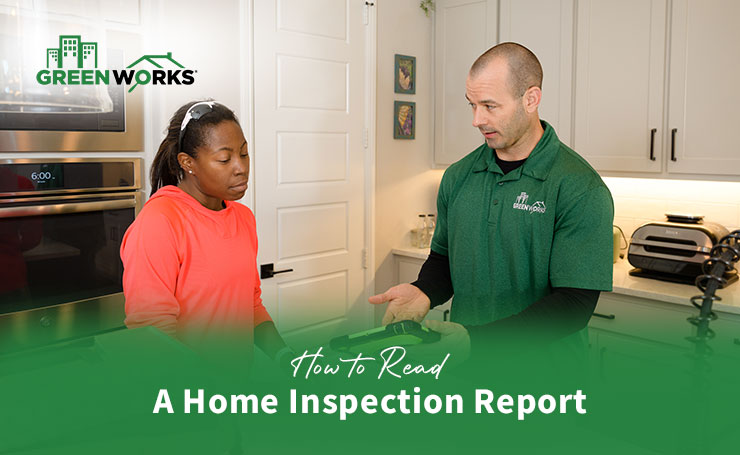Posts

How to Read A Home Inspection Report
A Texas professional home inspector is crucial in offering an unbiased evaluation of the state of the property when buying or selling a house. You’ll get a thorough report outlining the inspector’s findings after the inspection. For many people, it can be challenging to interpret and comprehend the information provided in a home inspection report. We’ll walk you through how to read a home inspection report in this blog. You can adequately analyze the report and decide on the property if you are familiar with the report’s components, terms, and essential details to search for.
Review the Summary
Reviewing the summary section comes first when reading a home inspection report. This significant section of the report, written by the home inspector, highlights the most important discoveries and problems made throughout the inspection process. You can quickly and easily get an overview of the general state of the property by thoroughly analyzing the summary.
The inspector uses an active voice to clearly express the essential details of the inspection in the summary section. It briefly highlights important ideas that demand attention and consideration. Focusing on the summary can help you quickly identify the main issues and evaluate their seriousness.
The summary acts as a map of home inspection in Texas, leading you through the report and highlighting the necessary details. It delivers a valuable picture of the property’s condition, allowing you to decide whether additional examination of specific areas is required quickly.
You quickly comprehend the inspection’s findings by actively engaging with the summary. This allows you to decide how important repairs are to make first, how to negotiate with the seller, or how to get professional advice. Thanks to the active voice in the summary section, you can quickly understand the main takeaways, which guarantees a clear and direct explanation of the inspector’s views.
Examine Each Section
The report is typically thoughtfully divided into several sections that in-depthly address many aspects of the house, including its structure, electrical systems, plumbing, HVAC, and more. It is essential to carefully and actively review each section. By spending enough time to study every section of the report carefully, you actively engage with it and pay attention to any flaws or issues that the expert home inspector has astutely identified.
The report highlights the inspector’s findings so you may learn more about the property’s condition and spot any potential problem areas. Thanks to the dynamic analysis of each component, you can actively spot any warning signs, required fixes, or additional evaluations that might be necessary.
You then integrate the precise conclusions and advice provided by the inspector by thoroughly reading through each area. Thanks to this active engagement, you can then actively evaluate the seriousness of any concerns found and ascertain how they affect the general state of the property.
Furthermore, scrutinizing each section of the report enables you to prioritize repairs or renovations based on the identified deficiencies. By actively addressing these concerns, you can ensure the property’s safety, functionality, and longevity.
Understand the Severity
Comprehending the severity assigned to each issue included in a home inspection report is a crucial step that necessitates serious attention. As you read the report, consider how the professional home inspector has classified the issues. They are frequently categorized as major, minor, or safety concerns. This proactive method of determining severity helps prioritize required repairs and negotiate successfully with the seller.
Safety concerns draw attention to potential risks or hazards that must be mitigated immediately to protect occupants. The severity attributed to each issue is made clear in the report. This enables you to determine the significance and urgency of each issue. In order to maintain the integrity and safety of the property, major issues necessitate rapid attention and prompt resolution. Minor problems, on the other hand, might not be as urgent, but they should still be dealt with to stop them from developing into bigger concerns in the future.
You can prioritize repairs depending on their effect on the property by actively recognizing the seriousness of the concerns that have been detected. This information gives you the power to choose wisely about required repairs, spend resources appropriately, and negotiate with the seller from a position of understanding.
Understanding the severity rating also makes it possible for you to estimate the expenses and time frames associated with fixing the problems that have been found. This information helps to set reasonable expectations for the bargaining process and create repair budgets.
Assess Recommendations and Remedies
Actively seek out the inspector’s advice on addressing the issues they identified when evaluating recommendations and remedies. The inspector could provide insightful commentary on needed maintenance tasks, additional assessments, or repairs. Considering talking with experts or contractors for more thorough evaluations or precise cost estimates is crucial.
Start by carefully going over the inspector’s recommendations. They will describe the precise steps necessary to address the issues found during the inspection. These recommendations include updating dated systems, replacing worn-out materials, or repairing defective components. Take note of each suggestion and sequence them in order of urgency and potential impact.
Next, actively collaborate with consultants or contractors with relevant specialties. Ask for their assistance in conducting more thorough analyses or assessments of your uncovered concerns. These experts will offer in-depth analysis and professional judgment on the suggested fixes or required upgrades. You may guarantee a thorough and precise grasp of the situation by involving them.
Consult with contractors to get accurate cost estimates for the proposed solutions. You can determine the financial effects of the suggested activities by actively communicating with these experts. This will allow you to properly manage your budget and make judgments about the required upkeep or repairs.
It is essential to proactively speak with the professional home inspector whenever you have concerns or need clarification during the home inspection process. By getting in touch with them personally, you can take advantage of their knowledge and acquire more information, justifications, or suggestions suited to the property’s particular circumstances.
Along with thoroughly inspecting the property, the inspector’s job entails helping you comprehend the inspection report and its implications. Please don’t hesitate to contact the inspector if any parts of the report are unclear to you or if you have any queries about specific findings. They have a variety of expertise that can assist you in making judgments about the property.
Experience exceptional home inspection services in Texas with Green Works Inspection! Contact us now for professional and thorough assessments of your property. Our expert team utilizes advanced techniques and state-of-the-art equipment to provide you with accurate and comprehensive reports. Discover any potential issues or concerns before making a significant investment. Schedule your Green Works home inspection today



